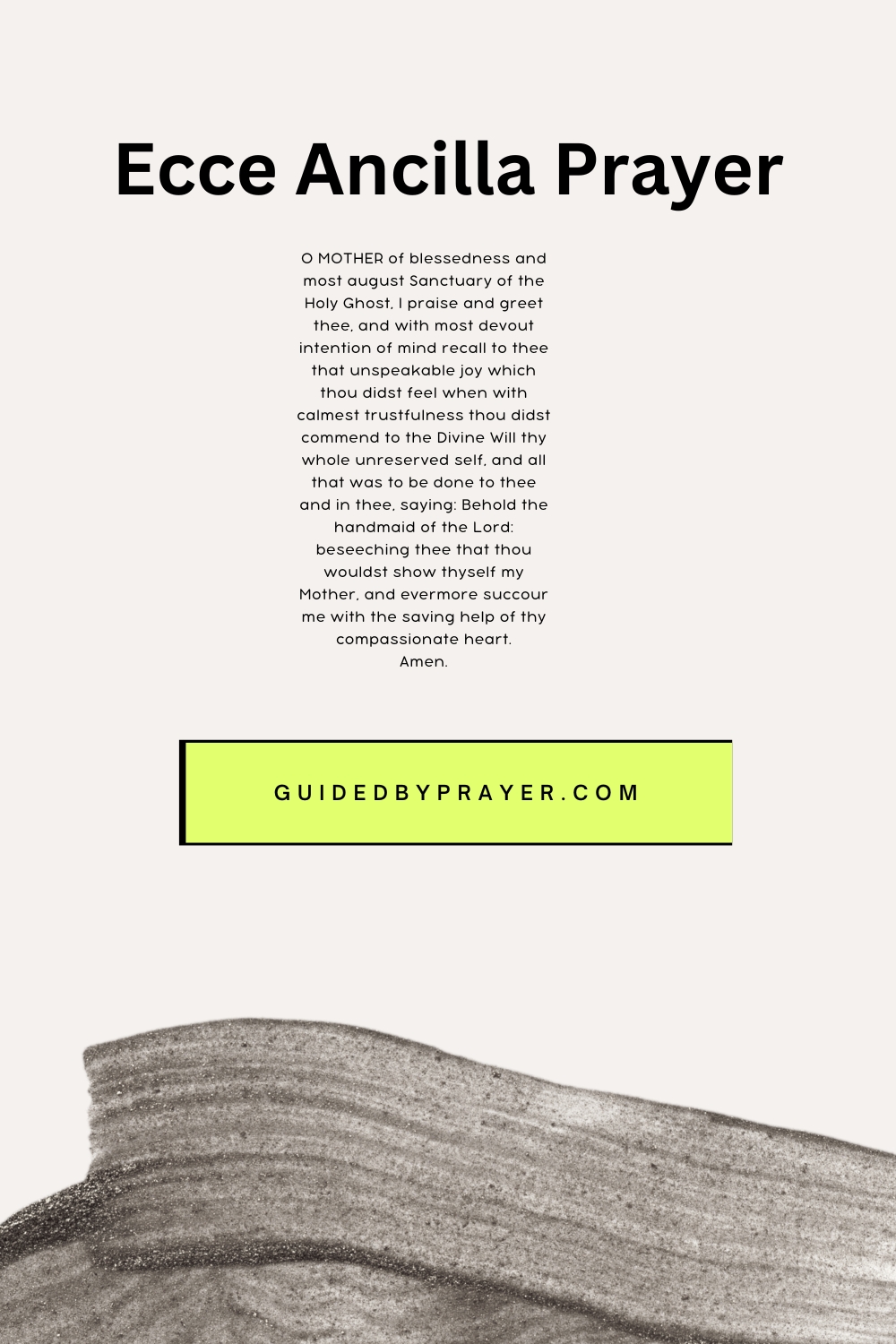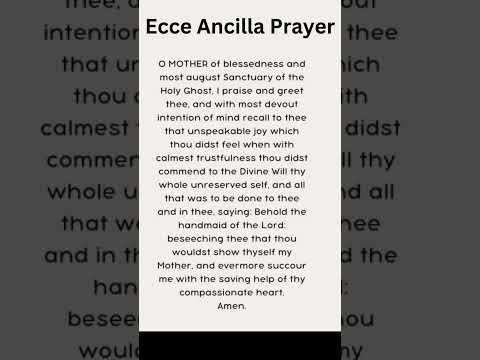The Ecce Ancilla prayer, meaning “Behold the Handmaid” in Latin, is a profound Catholic devotion centered on Mary’s humble acceptance of God’s will at the Annunciation. This prayer commemorates Mary’s fiat – her “yes” to becoming the Mother of God – and serves as a model of perfect submission to divine will. It is often associated with the Angelus devotion and reflects the deep spiritual significance of the Incarnation.
Historical Context
Origin: Traditional Catholic devotion
Original Language: Latin
Historical Usage: Part of the Angelus devotion, prayed three times daily
Ecce Ancilla Prayer
O MOTHER of blessedness,
and most august Sanctuary of the Holy Ghost,
I praise and greet thee, and with most devout intention of mind
recall to thee that unspeakable joy which thou didst feel
when with calmest trustfulness thou didst commend to the Divine Will
thy whole unreserved self, and all that was to be done to thee and in thee,
saying: Behold the handmaid of the Lord:
beseeching thee that thou wouldst show thyself my Mother,
and evermore succour me with the saving help of thy compassionate heart.
Amen.
Scripture Foundation
Prayer Usage Guide
Prayer Variations
The Ecce Ancilla prayer has several variations across different traditions:
Traditional Latin Version:
The original Latin text used in formal liturgical settings.
Angelus Version:
Incorporated into the larger Angelus devotion with specific responses.
Contemporary Version:
Modern adaptations that maintain the essence while using current language.
Cultural & Historical Significance
The Ecce Ancilla prayer has deeply influenced Catholic spirituality and art, inspiring countless paintings and sculptures of the Annunciation scene. Its message of humble submission to God’s will continues to resonate with believers, particularly in times of personal discernment and decision-making.

